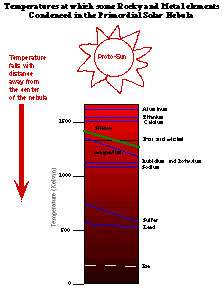This is a schematic showing where material forms.
Click on image for full size
Image from: After Moons and Planets
The effect of temperatures on the condensation of certain materials
In the picture, the proto-sun is shown at the top, and the temperature in the nebula is shown to decrease with distance farther away from the proto-sun, towards the bottom of the drawing.
The temperature at which ice begins to form solid material is the freezing temperature, near 250 K on the diagram. The temperature at which rocky materials, of which the terrestrial planets are made of, such as Calcium, Magnesium, Iron, Nickel, and Lead, can begin to form solid material, is much higher.
Thus solid material condensed close to the proto-sun, and formed the terrestrial planets. Solid material also condensed in the middle of the nebula, near the proto-Saturn, but Saturn also drew ice and more simple gases from the nebula. The gaseous material which Saturn drew from the nebula stayed, while the gaseous material which the terrestrial planets drew from the nebula probably drifted away.
You might also be interested in:
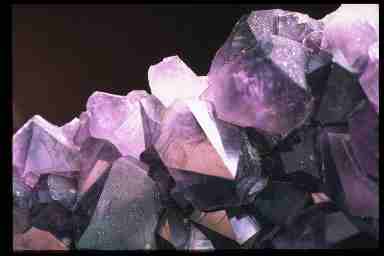
Minerals occur naturally on rocky planets and form the building blocks of rocks. They are non-living, solid, and, like all matter, are made of atoms of elements. There are many different types of minerals
...more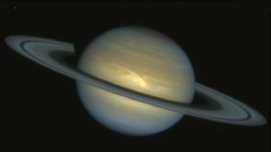
The most important motions in the atmosphere are winds. The major winds in Saturn's atmosphere are the zonal winds which are composed of alternating belts and zones flowing in opposite directions. Belts
...more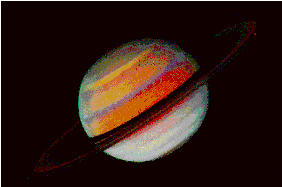
The striped cloud bands on Saturn, like Jupiter, are divided into belts and zones. In a belt, the wind flows very strongly in one direction only. In a zone, the wind flows very strongly in exactly the
...more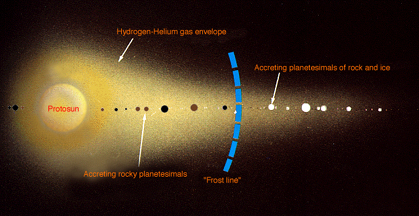
The position of the planets in the solar nebula greatly affected their 1. size and 2. composition. This is because of the effect of how cold it was in the nebula. 1. The nebula was a lot warmer close to
...more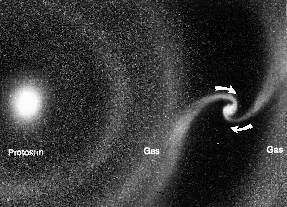
As shown in this picture, while they were forming in the solar nebula, the nucleii of the planets-to-be (called protoplanets) drew material to themselves from the cloud of gas and dust around them. The
...more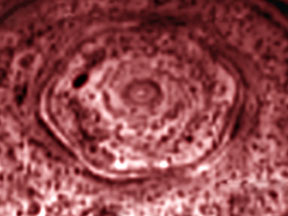
Astronomers have discovered a bizarre, hexagon-shaped feature in the clouds of Saturn near the planet's North Pole. The feature was first seen in images returned by the Voyager spacecraft in the 1980s,
...more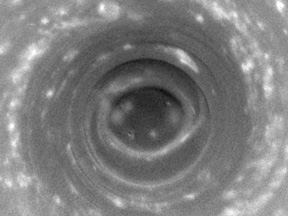
Saturn's South Pole is an extremely stormy and surprisingly warm region. A vast, hurricane-like storm centered on the South Pole dominates the area. Astonishingly, the pole is also warmer than any other
...more


